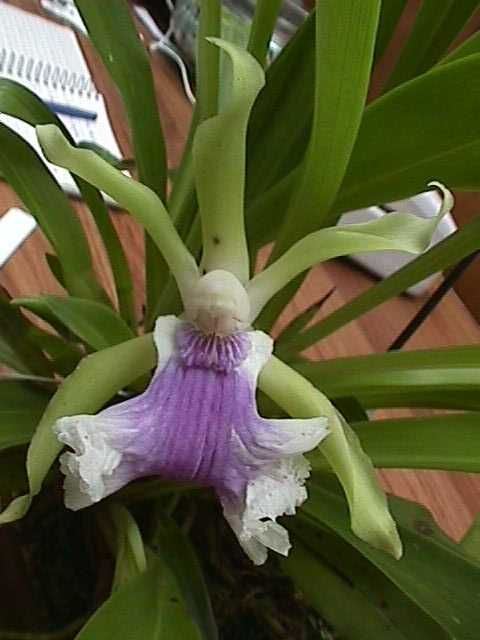 |
Chondrorhyncha |
|
Chondrorhyncha is an easy-to-grow genus of small-moderately sized plants that produce strongly fragrant flowers. Chondrorhynchas enjoy moderately bright light, intermediate temperatures, good humidity and air movement. They grow well in plastic pots with moss or a seedling bark (Paph) mix. According to Dr. Robert Dressler, there are six species of Chondrorhyncha found in Panama.
Catalog Codes: Plant Size: S=seedling (3-5" leaf span), LS=large
seedling (6+ leaf span), NBS=near-blooming size, BS=blooming size,
MC=mericlone, D=division, MT=mounted
Plant Culture Codes:
What You May Expect From the Plants We Ship:
Although we sell only nursery-grown divisions or seedlings, the fact that they are shipped from Panama may result in the need to reestablish the plants here in the U.S. In many cases, we do this for you. In other cases, freshly imported plants sent to you may need a little special care initially to get them growing well under your growing conditions. Mounted plants grown in Panama may arrive on our "artifcial logs" (dreamed up by Lynn) which allows us to import plants that will suffer greatly from being cut from their mounts (which we can not import, as most are wood or forest products). Orchids cultivated in pots or dug up from Maduro's 20 acre orchid garden (for example, Sobralias) must be shipped bare root (that is with no potting material), so the plants may be inspected. This is ususally done by the use of net bags filled with fresh moss surrounding the roots (again, thanks to Lynn's great idea). This allows the plants to begin the establishment and rerooting process, as soon as they arrive, and even before we pot them!
When you receive freshly imported plants or plants sent to you bareroot, you should pot the plants into a clean pot with fresh growing medium. We have found that long-strand sphagnum moss (available from your local orchid supply company) is ideal for the first 6-10 months. Use a plastic pot that is just large enough to comfortably contain the root ball and have room for moss to be added. It is important that the moss be wet when you are potting the orchid (dry moss will absorb water, swell, and suffocate the new roots. Pack the moss in loosely, but firmly enough to support the plant (tall plants may need to be tied to a stake for support). Water thoroughly, and the place the plant in a humid position in your growing area. If leaves were damaged in trasit, they may be removed with a sharp CLEAN knife. Do not reuse the knife on other plants until it has been cleaned again (single edge razor blades from the paint store work very well!). If a ding or scratch results in the start of a rot, treat the plant with a fungicide.
To help guide your expectations for specific plants we offer, we are instituting the following codes for guidance:
Chondroryncha albicans (formerly sold as Chondroscaphe crassa) - (Panama) Incredible species with dwarf growth habit. This species is a fraction of the size of other species in the genus, but the flowers are disproportionately large! Could revolutionize hybridization in this group! Cream-colored flowers a pair of large "dark eyes" in the throat with a yellow callus are produced individually from among the foliage. Grow warm to intermediate (comes from 600-4,500 feet elevation),
evenly moist, moderate light.
Chondrorhyncha aromatica (syn. Cochleanthes aromatica) - (Panama) Highly fragrant and exotic green flowers with real blue lip emerge from attractive fan-shaped growths. Easy! Grow intermediate (comes from ~3,000 feet elevation), moderate light, evenly moist. Recommended for novice and advanced growers,alike!
Chondrorhyncha aromatica var. santefensis (syn. Cochleanthes aromatica var. santafeensis) - (Panama) Highly fragrant and exotic green flowers with large flat real blue lip emerge from attractive fan-shaped growths. Easy! Grow intermediate, moderate light, evenly moist.
Chondrorhyncha picta - (South America) Formerly listed as Cochleanthes, rarely seen species with compact growth habit.
Pale green flowers with yellowish lip with heavy purple veins to the margin are produced individually from among the foliage. Grow cool to intermediate,
evenly moist, with good humidity, moderate light.
|
|